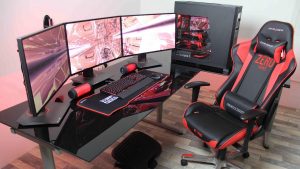Introduction
When it comes to enhancing the performance and visual experience of your computer, investing in a high-quality graphics card is crucial. Whether you’re a gamer, a content creator, or a professional in need of powerful graphics processing, finding the right graphics card can significantly impact the quality of your work and the overall efficiency of your system.
However, purchasing a graphics card can be a daunting task, especially with the wide variety of options available in the market today. It’s essential to consider several factors to ensure that the graphics card you choose is compatible with your system, meets your specific requirements, and provides the best value for your investment.
In this guide, we will explore the key considerations you should keep in mind when buying a graphics card. From compatibility and performance to power requirements and connectivity, we will provide you with the necessary information to make an informed decision.
Whether you’re a seasoned tech enthusiast looking to upgrade your existing graphics card or a beginner exploring the world of computer hardware, this guide will navigate you through the intricate details and help you find the perfect graphics card for your needs.
Before diving into the specific features and specifications of a graphics card, it’s crucial to assess your system requirements and understand the purpose you intend to use the graphics card for. This will ensure that you choose a graphics card that matches your needs and provides the best possible performance.
Now, let’s dive into the details of what you need to know when buying a graphics card.
Compatibility with Your System
Before investing in a graphics card, it’s crucial to ensure that it is compatible with your system. Graphics cards require specific hardware and software requirements to function optimally, so it’s essential to take the following factors into consideration:
1.1. Motherboard Compatibility: Check the compatibility of your motherboard’s expansion slot with the graphics card you intend to purchase. The most common slot for graphics cards is the PCI Express (PCIe) slot. Ensure that your motherboard has the appropriate PCIe slot version (e.g., PCIe 3.0) to support the graphics card.
1.2. Power Supply: Graphics cards require a certain amount of power to function. Ensure that your power supply unit (PSU) has enough wattage and the necessary PCIe power connectors to support the graphics card. You can usually find the power requirements of the graphics card in its specifications.
1.3. Physical Space: Consider the physical dimensions of the graphics card and ensure that it fits into your computer case. Some graphics cards can be quite large and may require a spacious case or even custom cooling solutions. Measure the available space in your case and compare it with the graphics card’s length and height specifications.
1.4. Operating System: Ensure that your operating system is compatible with the graphics card’s drivers. Most modern graphics cards have drivers available for popular operating systems like Windows and macOS. Check the manufacturer’s website for driver compatibility information.
1.5. System Requirements: Apart from the hardware compatibility, also consider the minimum system requirements specified by the graphics card manufacturer. These requirements typically include the minimum CPU, RAM, and system configuration needed for optimal functioning.
By ensuring compatibility with your system, you can eliminate any potential issues and ensure that your graphics card performs at its best. Take the time to research and cross-check the compatibility of the graphics card with your system’s specifications before making a purchase.
Purpose of the Graphics Card
Understanding the purpose you intend to use the graphics card for is crucial in finding the right one for your needs. Different users have different requirements, and the purpose of the graphics card can vary. Consider the following aspects when evaluating the purpose of the graphics card:
2.1. Gaming: If you’re a passionate gamer, you’ll want a graphics card that can handle the latest game titles and deliver smooth gameplay at high resolutions. Look for a graphics card with a powerful GPU (Graphics Processing Unit) and ample VRAM (Video Random Access Memory) to ensure a lag-free gaming experience.
2.2. Content Creation: Content creators, such as video editors and 3D animators, require a graphics card that can handle intensive tasks like rendering and processing large files. Look for a graphics card with good compute performance and high memory bandwidth to accelerate your creative workflow.
2.3. Professional Work: Professionals who work with applications like CAD (Computer-Aided Design), architectural modeling, or scientific simulations, require a graphics card with excellent precision, accuracy, and compatibility with specialized software. Look for graphics cards specifically designed for professional applications.
2.4. Casual Use: If your graphics card needs revolve around everyday tasks like web browsing, video streaming, and basic photo editing, you don’t need a high-end card. A mid-range or even an entry-level graphics card will suffice, offering enough performance for smooth visuals in everyday applications.
2.5. Multiple Monitor Setup: If you plan to connect multiple monitors to your system, ensure that the graphics card supports the desired number of displays and the respective connectivity options (e.g., HDMI, DisplayPort, DVI). Some graphics cards also support ultra-wide displays or 4K resolutions, so consider your specific multi-monitor requirements.
Understanding the purpose of the graphics card will help narrow down your choices and ensure that you invest in the right hardware. It’s important to strike a balance between your requirements and your budget to make an informed decision.
Performance and Benchmarks
When buying a graphics card, assessing its performance capabilities is crucial in determining its suitability for your needs. Here are some key factors to consider when evaluating the performance:
3.1. GPU Specifications: The Graphics Processing Unit (GPU) is the heart of a graphics card. Look for a graphics card with a high clock speed, more CUDA or stream processor cores, and a larger number of texture units. These specifications contribute to better overall performance.
3.2. VRAM and Memory Bandwidth: Video Random Access Memory (VRAM) is dedicated memory on the graphics card that stores information required for rendering graphics. Choose a graphics card with sufficient VRAM for your intended use. Higher VRAM capacity allows for smoother performance, especially in graphically demanding games or applications. Additionally, consider the memory bandwidth, as higher bandwidth allows for faster data transfer between the GPU and VRAM.
3.3. Benchmarks and Reviews: Before making a final decision, consult credible benchmark tests and reviews from trusted sources. These tests evaluate graphics card performance in real-world scenarios and can provide valuable insights. Look for benchmark results that align with your usage requirements and compare different graphics cards to gauge their relative performance.
3.4. Overclocking Potential: Overclocking allows you to push the graphics card beyond its stock performance limits, thereby gaining additional performance. If you’re interested in overclocking, look for models with good cooling solutions and robust power circuitry that can handle higher clock speeds.
3.5. Future-Proofing: Consider future-proofing your investment by opting for a graphics card that can handle upcoming software advancements and game releases. While it’s impossible to predict the future, choosing a graphics card with strong performance headroom ensures longevity and minimizes the need for frequent upgrades.
Remember, peak performance is only one aspect to consider. Evaluate the overall value proposition, including the price-to-performance ratio, when comparing different graphics cards. Balance your needs, budget, and expected performance to find the best graphics card for your requirements.
VRAM and Memory Bandwidth
When considering a graphics card, understanding the concepts of VRAM (Video Random Access Memory) and memory bandwidth is essential. These specifications play a crucial role in determining the card’s performance and suitability for specific tasks. Let’s take a closer look at these factors:
4.1. VRAM Capacity: VRAM is the memory dedicated to storing and processing graphics data. It affects the card’s ability to handle high-resolution textures and complex visual effects. Higher VRAM capacity allows for smoother performance in graphically demanding applications, especially at higher resolutions. Gaming enthusiasts, content creators, and professionals working with graphics-intensive tasks may benefit from choosing a graphics card with ample VRAM.
4.2. GDDR Memory Type: Graphics cards typically utilize GDDR (Graphics Double Data Rate) memory, with different iterations such as GDDR5, GDDR5X, and GDDR6. Each iteration offers improved data transfer rates and efficiency. Consider newer memory types for better performance and future-proofing, as they can handle the demands of modern games and applications more effectively.
4.3. Memory Bus Width: The memory bus width determines the amount of data that can be transferred between the GPU and VRAM in a single cycle. Wider memory bus widths allow for more data to be transferred simultaneously, resulting in increased memory bandwidth and improved performance. Look for graphics cards with wider memory bus widths for better overall performance.
4.4. Memory Bandwidth: Memory bandwidth is the rate at which data can be read from or written to the VRAM. It is determined by the combination of VRAM speed, VRAM capacity, and memory bus width. Higher memory bandwidth ensures faster data transfer between the GPU and VRAM, resulting in improved overall performance, especially in tasks that involve handling large amounts of data.
4.5. Application Considerations: The VRAM and memory bandwidth requirements vary depending on the intended use of the graphics card. Gaming at higher resolutions, producing high-quality visual effects, or running multiple monitors require more VRAM and higher memory bandwidth. Content creators and professionals working with demanding software should also consider higher VRAM capacities to ensure smooth performance during their work.
When choosing a graphics card, it’s important to strike a balance between VRAM capacity, memory bandwidth, and other performance factors. Consider your specific needs, budget, and the demands of the applications or games you’ll be using to make an informed decision.
Power Requirements
Understanding the power requirements of a graphics card is crucial to ensure that your system can provide sufficient power for its optimal functioning. Here are some key considerations regarding power requirements:
5.1. Power Consumption: Different graphics cards have varying power consumption levels, measured in watts (W). Higher-end graphics cards tend to have higher power demands due to their more powerful GPUs and additional features. It’s important to ensure that your power supply unit (PSU) can deliver enough power to meet the requirements of the graphics card.
5.2. PSU Wattage: Check the wattage rating of your PSU to ensure it can handle the power requirements of the graphics card. The PSU should have a wattage higher than the recommended power consumption of the graphics card. It is recommended to have a PSU with some headroom to accommodate any potential power spikes or future upgrades.
5.3. PCIe Power Connectors: Graphics cards typically require power from the PSU using PCIe power connectors. Most commonly, these are 6-pin or 8-pin connectors. Ensure that your PSU has the appropriate PCIe power connectors for the graphics card. Some high-end graphics cards may require multiple PCIe power connectors.
5.4. Power Supply Efficiency: Consider the efficiency rating of your power supply. Higher-efficiency PSUs provide cleaner and more stable power to your components, reducing the risk of system instability or failure. Look for PSUs with at least an 80 Plus Bronze rating or higher for optimal performance and reliability.
5.5. Power Limitations: Check if your system’s power supply unit has any limitations, such as its maximum power output or the number of power connectors it can provide. These limitations may affect your choice of graphics card, especially if you’re considering a higher-end model that requires significant power delivery.
It’s also worth noting that graphics cards with higher power requirements can generate more heat. Ensure that your case has adequate ventilation and cooling solutions to maintain optimal operating temperatures.
By understanding the power requirements of the graphics card and ensuring compatibility with your existing power supply, you can avoid potential issues such as system instability or power-related failures. Always refer to the manufacturer’s specifications and guidelines to make an informed decision about the power requirements of your graphics card.
Cooling and Noise Levels
Proper cooling is essential for maintaining the performance and longevity of your graphics card. When considering a graphics card, it’s important to take into account its cooling system and noise levels. Here are some key factors to consider:
6.1. Cooling Solution: Graphics cards employ various cooling solutions, including fans, heatsinks, and even liquid cooling. Look for cards with efficient cooling designs that can effectively dissipate heat generated during intensive operations. Cards with larger heatsinks or multiple fans tend to provide better cooling performance.
6.2. Fan Configuration: Pay attention to the fan configuration on the graphics card. Models with multiple fans or designs that promote better airflow can offer improved cooling and help maintain lower temperatures. This can result in better overall performance and increased lifespan of the card.
6.3. Noise Levels: Consider the noise levels produced by the graphics card. Higher-end cards with powerful cooling systems may generate more noise due to the higher fan speeds required for effective heat dissipation. Look for cards with optimized fan curves or additional noise reduction features to minimize the noise output during regular usage.
6.4. Custom Cooling Solutions: Some manufacturers offer graphics cards with custom cooling solutions, such as larger heatsinks, improved fan designs, or even all-in-one liquid cooling. These custom solutions can provide better cooling performance and lower noise levels. However, they may come at a premium price.
6.5. Case Ventilation: Consider the airflow and cooling capabilities of your computer case. A well-ventilated case with proper airflow can help dissipate heat effectively, reducing the strain on the graphics card’s cooling system. Ensure that your case has sufficient intake and exhaust fans and that they are clean and unobstructed.
6.6. Overclocking and Custom Fan Profiles: If you plan to overclock your graphics card or tweak fan speeds, ensure that the manufacturer provides user-friendly software utilities or BIOS options. These tools allow you to adjust fan curves and optimize cooling performance based on your specific requirements.
By choosing a graphics card with effective cooling and considering noise levels, you can strike a balance between performance and a comfortable computing environment. Look for user reviews and feedback to gauge real-world cooling performance and noise levels before making your final decision.
Form Factor and Size
When considering a graphics card, it’s important to take into account its form factor and size. The physical dimensions of the card can impact its compatibility with your system and the available space inside your computer case. Here are some key points to consider:
7.1. Graphics Card Length: Graphics cards come in various lengths, commonly ranging from around 8 inches to over 13 inches. Measure the available space in your case and check the maximum supported card length. Ensure that the graphics card you choose fits comfortably without interfering with other components or obstructing airflow.
7.2. Dual-Slot or Triple-Slot Design: Many graphics cards occupy two expansion slots due to their cooling systems. However, some high-end cards with larger cooling solutions may occupy three slots. Consider the number of available expansion slots in your motherboard and check if the graphics card’s form factor aligns with your available space.
7.3. Thickness and Height: Graphics cards also vary in terms of their thickness and height. Ensure that the dimensions of the card are compatible with your case’s height and clearance. Pay attention to any protruding components like fans or heat pipes that could interfere with other components or obstruct cable routing inside the case.
7.4. Compact Form Factors: If you have a small-form-factor (SFF) case or are building a compact system, consider graphics cards specifically designed for compact builds. These cards feature smaller form factors and custom cooling solutions to fit within the limitations of small cases while still offering decent performance.
7.5. Connectivity: Check the position and availability of the display outputs on the graphics card. Ensure that the card’s form factor doesn’t obstruct any of the necessary connectivity ports, such as HDMI or DisplayPort, that you require for your monitor setup.
7.6. Compatibility with SLI/CrossFire: If you plan to use multiple graphics cards in SLI (Scalable Link Interface) or CrossFire configuration, ensure that your case can accommodate the necessary space to install the additional cards. Check if your motherboard supports multi-GPU setups as well.
Considering the form factor and size of the graphics card is crucial not only for compatibility reasons but also for proper airflow and cable management within your system. Take accurate measurements and refer to the manufacturer’s specifications to ensure a seamless fit when choosing a graphics card for your build.
Connectivity and Ports
When purchasing a graphics card, it’s important to consider the available connectivity options and ports. These determine the types of displays you can connect, the resolution and refresh rate supported, and the overall versatility of the card. Here are some key points to consider:
8.1. Display Outputs: Check the types and number of display outputs on the graphics card. Common display connectors include HDMI, DisplayPort, DVI, and VGA. Ensure that the card has the necessary outputs to connect your monitors or other display devices. Consider the combination of ports that best suits your current and future setup requirements.
8.2. Maximum Resolution and Refresh Rate: Each display connector has its own maximum supported resolution and refresh rate. Ensure that the graphics card’s ports and specifications can support the resolution and refresh rate of your connected displays. Look for specifications that match or exceed your requirements, especially if you plan to use higher resolutions like 4K or higher refresh rates like 144Hz.
8.3. Multi-Monitor Support: If you plan to use multiple monitors, check the maximum number of displays that the graphics card can support simultaneously. Ensure that the card has the necessary number of display outputs to accommodate your desired multi-monitor setup. Some graphics cards support extended displays, while others support display mirroring or both.
8.4. Additional Features: Some graphics cards offer additional features like VirtualLink for VR (Virtual Reality) connectivity or HDMI 2.1 for enhanced audio and video capabilities. Consider these features if they are important to your specific needs. However, keep in mind that these additional features may come at a higher cost.
8.5. Adapter Requirements: If your monitor or display device uses a different connector than what the graphics card offers, check the availability of adapters or dongles to ensure compatibility. Some manufacturers may include adapters with the graphics card, but it’s important to verify this before making a purchase.
8.6. Audio Connectivity: Check if the graphics card supports audio passthrough over HDMI or DisplayPort, allowing you to transmit audio signals to your display device without the need for separate audio cables. This is especially useful if your monitor has built-in speakers or if you plan to connect your graphics card to an AV receiver for a home theater setup.
Considering the connectivity and ports of the graphics card ensures that you can seamlessly connect your displays and take advantage of their features and capabilities. Take note of the specific connector types, supported resolutions and refresh rates, and the number of displays you plan to use when making your decision.
Price and Budget Considerations
When purchasing a graphics card, it’s crucial to consider your budget and the overall value for your money. Graphics cards come in a wide range of prices, and understanding your budget constraints will help you make an informed decision. Here are some key factors to consider:
9.1. Performance-to-Price Ratio: Evaluate the performance-to-price ratio of a graphics card to determine its overall value. Look for benchmarks and reviews that compare the card’s performance to its price. This will help you gauge whether the card provides sufficient performance for its cost. Keep in mind that higher-end models generally offer better performance but at a higher price point.
9.2. Realistic Needs and Budget: Consider your specific needs and budget when selecting a graphics card. If your requirements are modest, such as casual gaming or everyday tasks, you may not need to invest in a high-end card. Determine what level of performance you truly need and allocate your budget accordingly.
9.3. Future Upgradability: If you plan to upgrade your system in the future, consider the future compatibility and upgrade options of the graphics card. It’s generally more cost-effective to invest in a slightly more expensive card now that can meet your future needs, rather than having to replace the card sooner.
9.4. Warranty and Support: Consider the warranty length and the reputation of the manufacturer when making your decision. A longer warranty period provides peace of mind in case of any potential defects or issues. Additionally, check customer reviews and forums to gauge the manufacturer’s customer support quality and reliability.
9.5. Sales and Deals: Keep an eye out for discounts, promotions, and bundle offers that may be available for graphics cards. Timing your purchase to coincide with sales events or new product releases can often lead to cost savings or added value.
9.6. Refurbished or Used Options: If you’re on a tight budget, consider refurbished or used graphics cards. These cards are generally tested and certified by the manufacturer, offering a lower price compared to brand-new models. However, exercise caution and ensure that the seller provides warranty or return options.
Remember, your budget should align with your needs and expectations. It’s important to strike a balance between your desired level of performance, your available budget, and the long-term value that the graphics card offers to make the most cost-effective choice.
Brand and Warranty
When purchasing a graphics card, considering the brand reputation and the warranty provided is important. The brand reputation and warranty coverage can give you peace of mind and assurance regarding the quality and longevity of your investment. Here are some key factors to consider:
10.1. Brand Reputation: Research the reputation of different graphics card manufacturers. Look for brands known for their reliability, quality, and customer support. Established brands often have a history of producing reliable products and providing good customer service. Reading customer reviews, professional opinions, and forums dedicated to PC hardware can help you gauge the reputation of certain brands.
10.2. Product Support and Drivers: Check if the brand offers regular driver updates and software support for their graphics cards. Regular driver updates ensure compatibility with new software releases, improve performance, and address any issues that may arise. Access to comprehensive support resources and a well-documented knowledge base is also important in case you encounter any problems or have questions.
10.3. Warranty Coverage: Evaluate the warranty coverage provided by the manufacturer. Most graphics cards come with a standard warranty ranging from one to three years. Ensure that the warranty covers potential defects or issues that may arise during the specified period. Pay attention to any conditions or limitations of the warranty, such as accidental damage not being covered.
10.4. Extended Warranty Options: Some manufacturers offer extended warranty options for additional cost. Consider if an extended warranty is worth the investment, especially for high-end graphics cards. An extended warranty can provide extended coverage and peace of mind for a longer period.
10.5. Customer Support: Evaluate the quality and responsiveness of the manufacturer’s customer support. Check if they have dedicated customer support channels, such as email, phone, or live chat. Look for reviews and feedback from other customers regarding the promptness and effectiveness of the manufacturer’s support team.
10.6. Brand Loyalty and Ecosystem: Consider any loyalty programs, software utilities, or exclusive features provided by the brand. Some manufacturers offer additional benefits for customers who stay within their brand ecosystem. Consider if these benefits align with your needs and preferences.
Considering the brand reputation and warranty coverage of a graphics card can add an extra layer of confidence to your purchase. A reputable brand with good warranty coverage ensures that you are protected and supported in case of any issues that may arise during the specified warranty period.
User Reviews and Recommendations
When shopping for a graphics card, it’s valuable to consider the experiences and opinions of other users. User reviews and recommendations can provide valuable insight into the real-world performance and reliability of a graphics card. Here are some key points to consider:
11.1. Read Multiple Reviews: Take the time to read multiple user reviews from different sources. Look for reviews from both experts in the field and regular users. Gathering a diverse range of opinions can help you form a balanced understanding of the pros and cons of different graphics cards.
11.2. Look for Consistency: Pay attention to common threads and consistent feedback among user reviews. Look for recurring positive or negative comments about specific aspects of the graphics card, such as performance, compatibility, or customer support. Consistent feedback can provide a more reliable indication of the card’s strengths and weaknesses.
11.3. Consider Specific Use Cases: Look for reviews from users who have similar usage requirements to yours. If you’re a gamer, seek reviews from gaming enthusiasts who have tested the graphics card in various game titles. If you’re a content creator or professional, search for reviews from users who work in similar industries and rely on graphics-intensive applications.
11.4. Forum and Community Engagement: Engage with online forums and communities dedicated to PC hardware and gaming. These platforms provide a wealth of information and allow you to interact with experienced users who can offer recommendations and share their firsthand experiences with different graphics cards.
11.5. Consider Reliability and Longevity: Evaluate the feedback regarding the longevity and reliability of the graphics card. Look for indications of early failures, consistent driver issues, or other reliability concerns. A graphics card that receives positive feedback for its durability and long-term performance is generally a good indicator of its quality.
11.6. Seek Recommendations: Ask for recommendations from experienced individuals or trusted sources who have knowledge and expertise in the field of graphics cards. Be sure to provide them with your specific requirements, budget, and intended use, so they can offer tailored suggestions based on their expertise.
User reviews and recommendations can provide valuable insights and help you make an informed decision when purchasing a graphics card. By considering the experiences of other users, you can gain a better understanding of how a particular graphics card performs in real-world scenarios and whether it aligns with your needs and expectations.
Final Thoughts and Key Considerations
As you navigate the process of buying a graphics card, it’s important to keep in mind the following final thoughts and key considerations:
12.1. Compatibility: Ensure compatibility with your system, including the motherboard, power supply, physical space, and operating system. Cross-check specifications and requirements to avoid any issues during installation.
12.2. Purpose: Consider the purpose of the graphics card, whether it’s gaming, content creation, professional work, or casual use. Choose a graphics card that aligns with your specific needs and provides the necessary performance for your intended tasks.
12.3. Performance: Assess the performance capabilities of the graphics card, including GPU specifications, VRAM, memory bandwidth, and overclocking potential. Look for benchmark tests and real-world performance comparisons to determine how well the card performs in your desired applications.
12.4. Power Requirements: Take into account the power requirements of the graphics card and ensure compatibility with your power supply unit. Consider the PSU’s wattage, cables, and connectors to ensure that it can deliver sufficient power to the card.
12.5. Cooling and Noise Levels: Evaluate the cooling system and noise levels of the graphics card. Look for efficient cooling mechanisms to maintain optimal operating temperatures and minimize noise output, especially if you have specific requirements for a quiet and cool system.
12.6. Form Factor and Size: Consider the form factor and size of the graphics card and ensure compatibility with your computer case. Measure available space, account for dual- or triple-slot designs, and ensure that the card doesn’t obstruct other components or impede airflow.
12.7. Connectivity and Ports: Check the available connectivity options and ports to ensure compatibility with your monitors and desired resolutions. Consider factors like supported resolutions, maximum refresh rates, and the number and types of display outputs.
12.8. Budget and Value: Determine your budget and look for graphics cards that offer the best value for your money. Consider the performance-to-price ratio, warranty coverage, and future upgradability when weighing your options.
12.9. Brand and Warranty: Consider the reputation of the brand and the warranty coverage provided. Look for brands known for their reliability and customer support, and ensure that the warranty covers any potential defects or issues that may arise during the specified period.
12.10. User Reviews and Recommendations: Read user reviews, seek recommendations, and engage with online forums and communities to gather insights from other users. Consider their experiences and feedback to gain a better understanding of the real-world performance and reliability of the graphics card.
By taking all of these key considerations into account, you can make an informed decision and choose the graphics card that best suits your needs, budget, and desired level of performance. Remember to strike a balance between your requirements, budget, and long-term value to ensure optimal satisfaction with your graphics card investment.







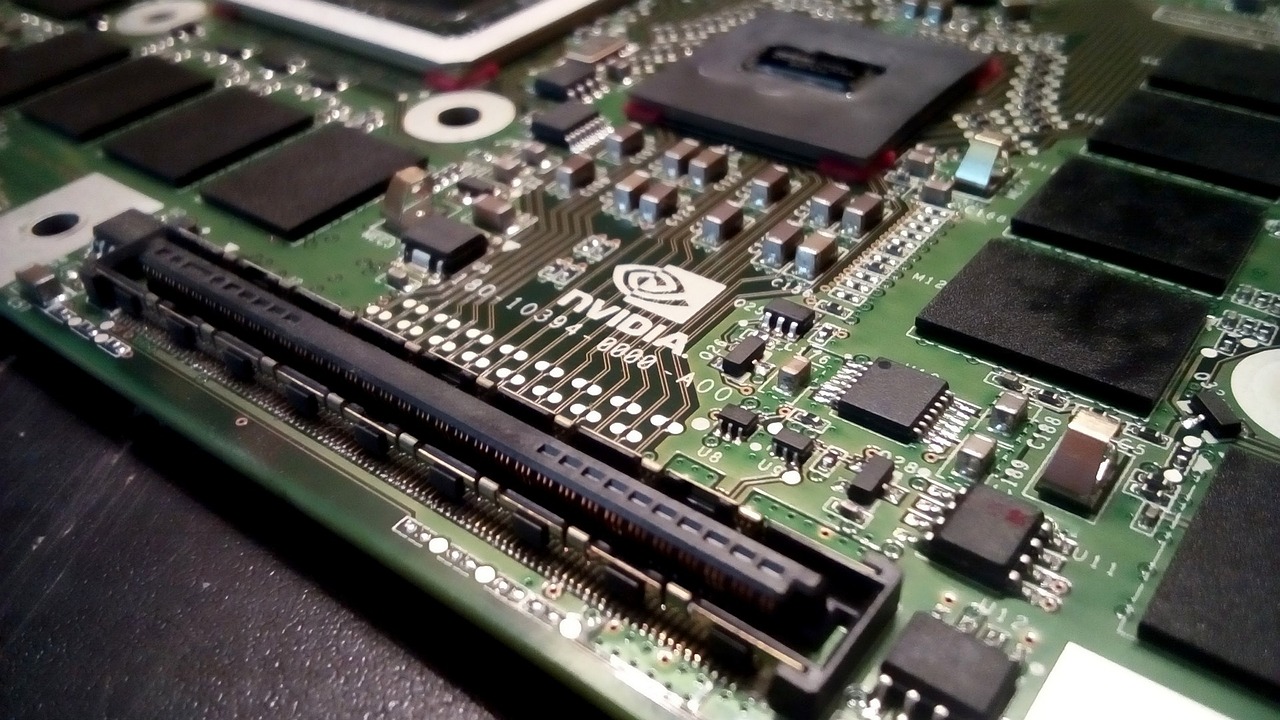

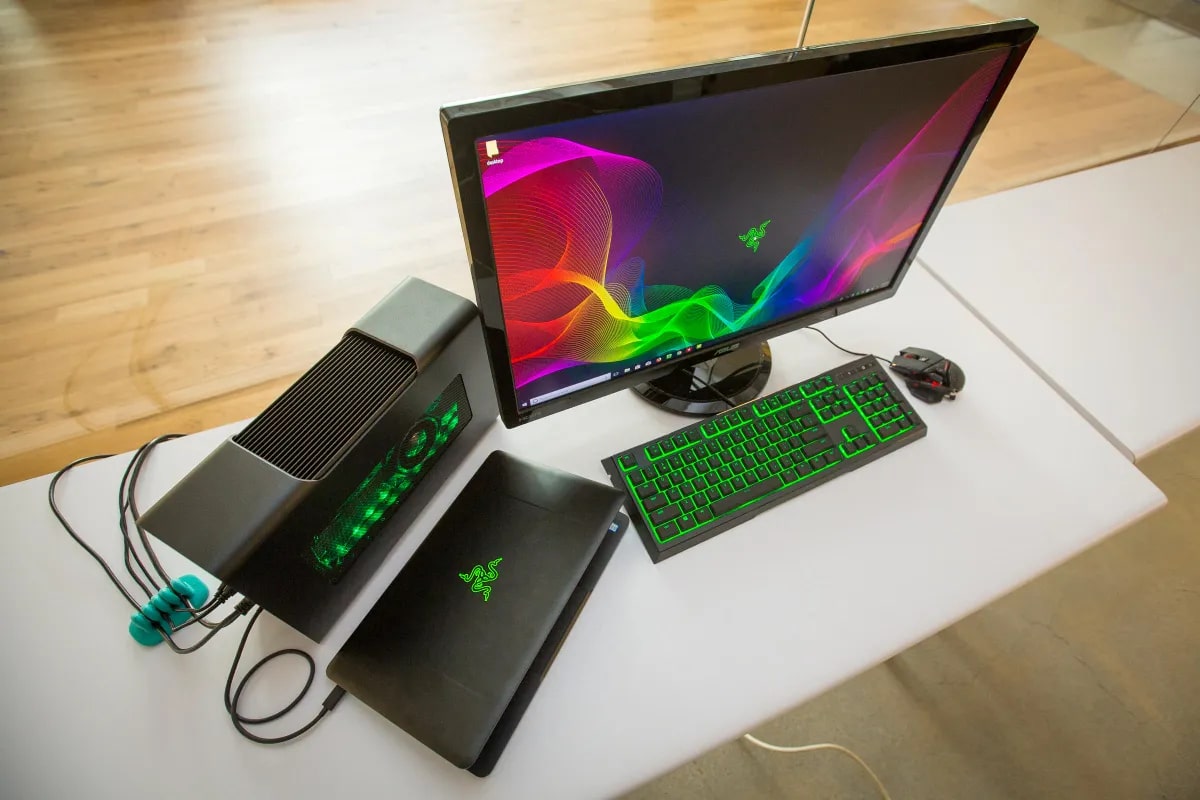

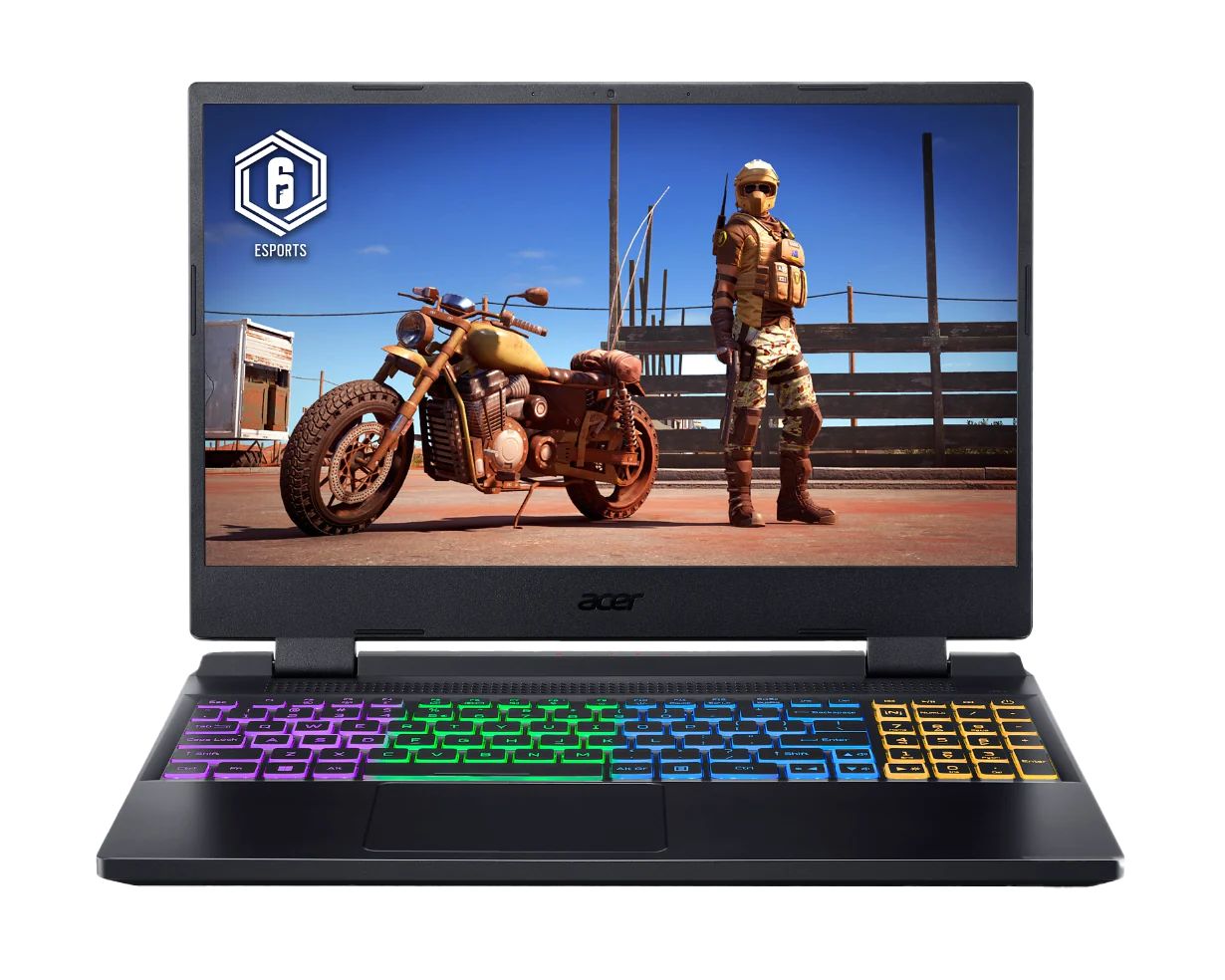

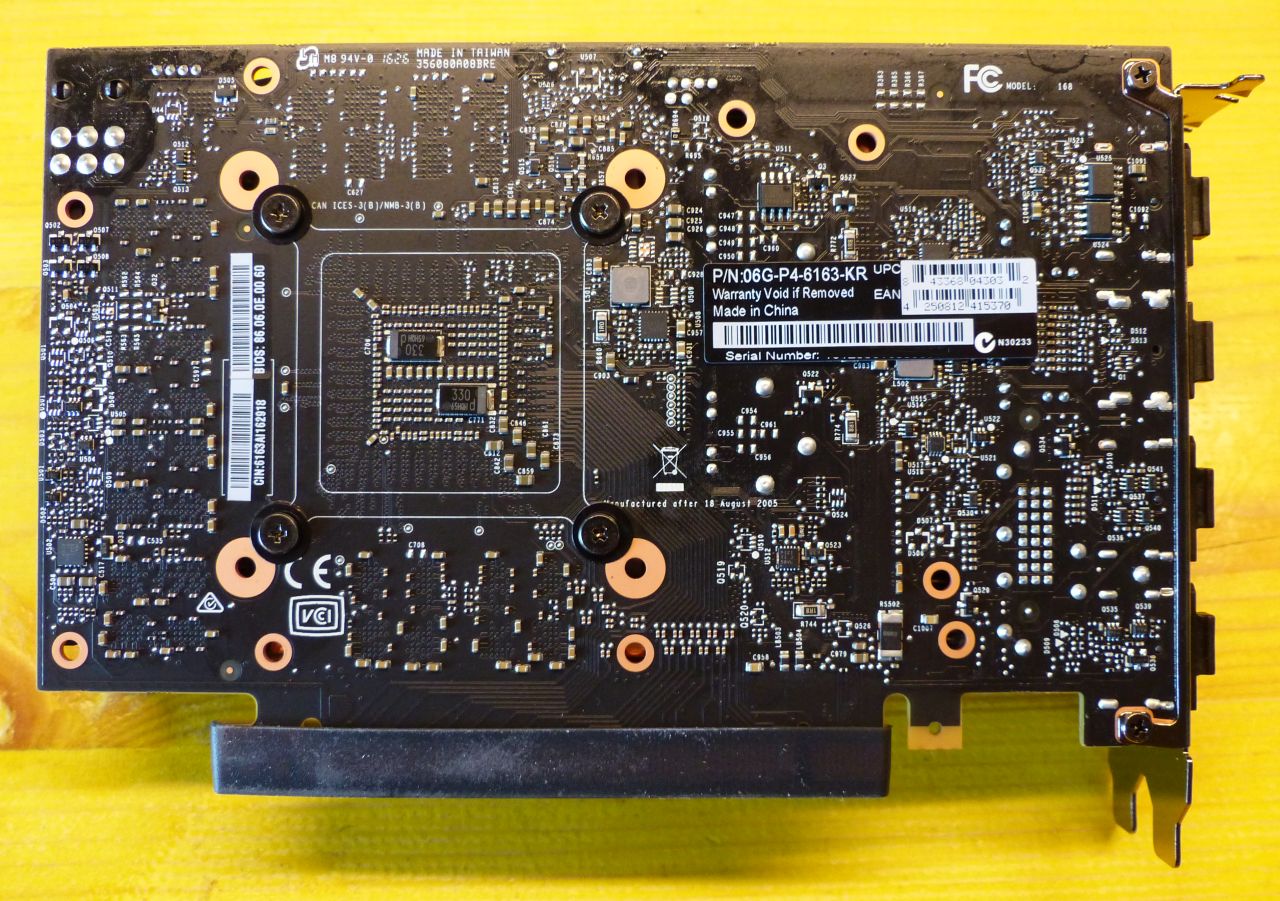
![Setting Up Dual Monitors With Your Laptop [Easy Guide]](https://robots.net/wp-content/uploads/2022/07/workstation-405768_1920-300x202.jpg)
